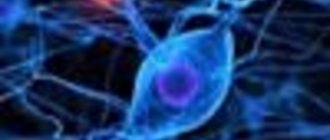Causes of long-term headaches
Soreness is a natural reaction of the body to inflammatory processes, insufficient blood supply, spasms and other factors. The headache is called cephalgia. It can have different origins, and therefore requires an individual approach during treatment. Thus, there are several types of long-term cephalalgia:
- vascular – occurs as a result of acute and chronic diseases of the cardiovascular system, as well as when blood pressure regulation is disturbed;
- nervous – caused by stress, lack of rest, intense exercise;
- infectious – provoked by poisoning with various substances;
- tension pain – associated with spasms of muscles and blood vessels.
The exact cause of the headache is determined based on the results of a complete examination. At home, it is impossible to carry out an informative diagnosis, as well as to select an effective treatment.
Tension headaches
The causes of cephalalgia can be different, but the most common of them is tension headache. They are associated with spasms of muscles and blood vessels in the neck and head. The reasons include staying in an uncomfortable position for a long time with your head fixed, or working at a monitor without breaks. Pain can also be triggered by constant nervous tension, stress, and abnormal physical activity. As a result of these factors, tension and spasm of the neck muscles occur, which compress the blood vessels and nerves. This leads to several symptoms:
- severe headache - it spreads over the entire surface of the head and is of a compressive nature;
- dizziness, general weakness;
- constant drowsiness, decreased concentration.
If a person has a headache for several days, a week or more, it is worth reconsidering the work and rest regime. Symptoms often go away if you avoid stress and ensure proper sleep. During sedentary work, be sure to take short breaks for neck exercises and general warm-up.
Migraine
Common causes of long-term cephalalgia include migraines. This is a chronic disease that is often hereditary. Doctors name several conditions for its development. The pain is caused by vascular spasms, as a result of which the brain receives insufficient oxygen. It can also occur with increased sensitivity of brain cells. They react to external stimuli, while affecting pain centers.
Migraine often manifests itself as a severe, throbbing headache that covers one side of the head. Shortly before the attack begins, a “migraine aura” may occur. This is a characteristic set of symptoms that indicate the imminent onset of the acute phase:
- nausea, dizziness, general weakness;
- the appearance of dark spots and circles before the eyes (visual hallucinations);
- tinnitus, hearing loss;
- increased heart rate, increased sweating.
A migraine attack lasts from 3–4 hours to several days and weeks. Symptoms are individual for each person. Thus, an aura appears in only a fifth of patients, and a headache will not necessarily affect only half of the head. If the disease worsens frequently, the doctor will prescribe special medications against migraines - cephalgia does not go away after taking conventional painkillers. It is also useful to maintain a sleep schedule, include large amounts in the diet, and avoid stress and sudden changes in climatic conditions.
Poisoning
Intoxication causes headaches as often as other causes. There are several types of poisoning, depending on the substance that provoked it. Thus, food intoxication can be caused by low-quality food or substances that are not suitable for ingestion. Poisoning by heavy metals, medications, alcohol, and volatile poisons is also distinguished. Toxins can enter the human body through bites of animals, snakes and insects due to helminth infestation.
Cephalgia is not the only sign of poisoning, but may precede the development of the full picture. You should immediately consult a doctor if the following symptoms occur after contact with hazardous substances, consumption of low-quality products, animal or insect bites:
- dizziness, nausea and vomiting;
- disruption of the digestive system;
- severe abdominal pain;
- increased body temperature;
- other specific signs.
Treatment for poisoning must begin as quickly as possible. It is important to tell your doctor about all foods you have eaten and other substances you have come into contact with today or recently. For some types of poisoning, there are antidotes - they must be taken as quickly as possible to neutralize the effect of the toxins. In other cases, various detoxification methods are prescribed, including drip administration of electrolyte solutions, gastric lavage and others. Treatment takes place at home or in a hospital, depending on the degree of poisoning.
Injuries and their consequences
Cephalgia is one of the first manifestations of traumatic brain injury. Even in everyday life, you can get a severe bruise or concussion, but more often they happen due to falls and accidents. These injuries are dangerous because they affect the condition of brain structures and can cause long-term complications. Immediately at the time of injury, as well as several hours after it, characteristic symptoms appear:
- acute pain, which can be localized in a specific area or affect the entire surface of the head;
- dizziness, nausea and vomiting;
- deterioration of hearing and vision, the appearance of dark spots and circles before the eyes;
- loss of consciousness is a sign that you need to urgently seek medical help.
After a traumatic brain injury, a headache can bother a person constantly or manifest itself in short attacks. In many patients, it worsens in response to changing weather conditions, stress, physical activity and other factors. The pain goes away on its own after rest, and also responds to painkillers.
Increased intracranial pressure
Intracranial hypertension is a common disorder. This is a complex indicator that cannot be measured at home, and the diagnosis is often made based on the clinical picture and indirect examinations. Intracranial pressure includes the pressure of blood in the cerebral vessels, the fluid of the cerebral ventricles and the brain tissue itself. The disease is often congenital, but can occur at any age due to injuries and chronic vascular pathologies. It causes characteristic symptoms:
- prolonged headaches that are concentrated in the temples or spread to the entire surface of the head;
- sensation of pulsation inside the skull;
- deterioration of hearing and vision;
- general weakness.
With intracranial hypertension, the patient often has a headache. The disease is chronic and manifests itself in attacks. They can be triggered by an increase in atmospheric pressure or other changes in weather conditions. The treatment is comprehensive, aimed at reducing pain and removing excess fluid. The regimen includes painkillers, diuretics (diuretics) and medications to improve blood flow to the brain.
Diseases of the cervical spine
If you often have a headache, this may also indicate diseases of the spine. The vertebral artery passes here - its path lies through the openings on the processes of the vertebrae, so it is normally protected from damage by bone tissue. However, with some disorders, the vertebrae change their correct position and compress an important vessel that carries blood to the brain. At the same time, irritation of the spinal nerve roots occurs, which provokes an exacerbation of the pain syndrome.
There are several diseases that are often detected when diagnosing long-term cephalalgia:
- osteochondrosis is a chronic disorder in which there is a decrease in the cartilage layer between adjacent vertebrae, pathological growth of the articular surfaces of bones and the formation of osteophytes (bone growths);
- protrusion and hernia - protrusion of an intervertebral disc of different sizes, which leads to compression of blood vessels and nerves, chronic pain in the neck and head;
- spondylosis is a pathological condition in which fusion and immobility of adjacent segments of the cervical spine are observed;
- curvature of the neck - scoliosis and kyphosis also cause chronic cephalgia.
In advanced stages of spinal diseases, as well as in cases of progressive congenital anomalies, surgical treatment is recommended. Headaches go away if you eliminate their main cause - compression of nerves and blood vessels. In the initial stages, the doctor prescribes painkillers, medications for blood supply and nutrition of the intervertebral discs. At home, you need to do neck exercises; it is also useful to go swimming and carry light loads in the fresh air.
Vascular diseases
Chronic vascular diseases are one of the reasons why your head may hurt for several days or weeks in a row. They lead to deterioration of blood supply to brain tissue, prolonged ischemia and lack of nutrients for the functioning of brain structures. During the diagnostic process, several common diseases are discovered that can cause headaches.
- Atherosclerosis is a chronic metabolic disorder in which there is an increase in the level of various fractions of lipoproteins and cholesterol in the blood. These substances accumulate on the inner wall of blood vessels and form plaques over time. With atherosclerosis, it is important to pay attention to any changes in well-being and consult a doctor at the first sign of a headache.
- Hypertension is an increase in blood pressure. The disease manifests itself as attacks of headache, which is accompanied by nausea, general weakness, and dizziness. Typical signs also include redness of the skin and mucous membranes.
- Hypotension is a decrease in blood pressure. This condition is no less dangerous, as it can provoke an ischemic stroke. During an attack, a pressing pain in the head begins, tinnitus and dizziness, rapid heartbeat, paleness of the skin and mucous membranes.
If you suspect vascular disease, it is important to undergo an examination and take into account all the recommendations of doctors. A special diet with a low content of animal fats, moderate exercise, and medications to strengthen the walls of blood vessels and stabilize blood pressure are recommended. In advanced cases and without treatment, there is a high probability of ischemia (oxygen starvation) of brain cells, which leads to an increased risk of stroke.
Other reasons
Headache is not an independent disease, but one of the symptoms of a number of disorders. It should not be ignored, especially if it does not go away for a long time. It can occur against a background of stress and fatigue, intense mental and physical stress without sufficient rest. However, more dangerous conditions may also be detected:
- neoplasms – chronic pain is one of the first signs;
- meningitis, encephalitis - infectious diseases of the brain and its membranes;
- sinusitis - purulent inflammation of the paranasal sinuses, which can manifest itself as a complication of colds and acute respiratory viral infections;
- parasitic infestations – headaches occur due to intoxication with toxic waste products of helminths.
If the headache is long-lasting and bothers a person for a week or two weeks in a row, you should not try to find a treatment on your own. In the event of a severe attack, doctors recommend seeking help within two hours. It is this period that is most important for providing first aid if a person has a stroke.
Diagnostic methods
If a person has had a headache for a week, it is important to determine why the symptom is occurring. To do this, the doctor prescribes a set of examinations, depending on the results of the examination. These include:
- EEG (electroencephalography) – examination of the brain, which will identify various diseases;
- MRI is a modern, informative technique, prescribed for suspected tumors, cerebrovascular accident, stroke;
- Ultrasound of the vessels of the neck and head with the addition of a contrast agent (Dopplerography) - allows you to determine areas where blood circulation is impaired;
- laboratory blood tests are prescribed to determine inflammatory processes, the concentration of cholesterol and other substances, and disruption of the functioning of individual organs and systems.
Determining the cause of the headache is the first stage of successful treatment. The Clinical Brain Institute has high-quality equipment that allows you to visualize the full picture of the disease. All examinations can be completed in our center, including complex modern techniques.
When you need to urgently go to the clinic
Occasionally, a filling can create serious problems that require immediate attention to your dentist:
- gum pain after tooth filling; if the pain does not increase, then this is a variant of the norm; but often the pain syndrome is accompanied by redness and swelling of the mucous membrane, the appearance of pus when pressing on the gums, which indicates the presence of an inflammatory process; it could be a burn to the gum tissue, an allergy to the filling material, or an infection; in any case, you need to contact a specialist;
- a toothache and a sharp rise in body temperature to high numbers or a slight increase lasts more than three days, a severe headache appears;
- the cheek on the side of the filling became swollen and pain of any nature, increasing in intensity, appeared in the tooth or periodontal tissues.
Don't put off visiting the dentist if your cheek is swollen or you have a fever!
Headache treatment
Treatment for a person who has had a headache for a week or more can only be determined by a doctor. Rest, a cold compress on the forehead, and a light massage of the neck and head are recommended as first aid. If the pain is severe, you can take painkillers from your home medicine cabinet. The doctor will prescribe a comprehensive treatment based on the diagnostic results, which may include the following steps:
- drug therapy - taking analgesics, anti-inflammatory drugs and antibiotics, drugs to improve nutrition and blood supply to brain cells, intervertebral cartilage;
- surgical treatment – surgery is necessary for neoplasms and advanced diseases of the cervical spine;
- additional techniques that include physiotherapy, gymnastics and therapeutic massage, swimming.
A short-term headache after a hard day at work indicates that you need to normalize your work and rest schedule. However, if it does not go away either today or on the second and third days, it is important to consult a doctor. There is a high probability of detecting chronic diseases, which can progress as they progress.
What to do if your tooth hurts after filling?
If a tooth begins to hurt due to a filling being placed, but its condition does not require additional dental procedures to relieve severe pain, the doctor may prescribe:
- painkillers ; most often these are drugs from the group of non-steroidal anti-inflammatory drugs (NSAIDs); Ketoprofen (Ketonal) has the best analgesic properties; in case of severe pain, it is enough to take a long-acting capsule of 150 mg - these will relieve pain for a day; instead of Ketonal, you can use the rectal suppository Diclofenac - 100 mg; both drugs are contraindicated in the presence of a gastrointestinal ulcer; in such cases, it is better to take a nimesulide tablet (Nise) - it has almost no negative effect on the gastrointestinal tract;
- physiotherapeutic procedures - to reduce pain, electrophoresis with novocaine is prescribed; for swelling, it is better to use hydrocortisone instead of novocaine; Magnetic and laser therapy are also used; the number of procedures depends on the patient’s condition;
- a one-time injection of an antibiotic solution into the periodontal tissues - for problematic traumatic treatment to prevent infectious inflammation and pain.
There are many folk recipes for relieving severe post-filling toothache:
- rinsing the mouth with a decoction of oak bark; Pour 2 tablespoons of crushed bark into a glass of water, bring to a boil, boil for 15 minutes, add boiled water to the original volume, strain and rinse your mouth several times a day; when a tooth hurts, it relieves inflammation, swelling and associated pain well;
- applying a small piece of salted (but not smoked) lard to the gum - this application is especially helpful for pain associated with tissue swelling: salt draws fluid from the tissue, swelling and pain go away;
- a reflex method of pain relief (used in folk medicine for a very long time): grate a clove of garlic on a fine grater, place it in a thin napkin, apply it to the inside of the wrist of the hand opposite the painful tooth, fix it and leave it overnight.
Prevention methods
According to statistics, adults often have headaches due to acquired disorders. Common causes are poor diet, stress and lack of rest, and excess weight. Today, many people, including young people, lead a sedentary lifestyle, which also negatively affects the general condition of the body. Doctors at the Clinical Institute of the Brain have several tips on how to provide timely prevention of headaches at home:
- regularly measure blood pressure, especially at the age of 40 years or more;
- perform simple exercises for the neck and head every day, including during the working day;
- consume sufficient amounts of vitamins and microelements;
- give up bad habits, smoking and drinking alcohol, as well as fatty foods high in cholesterol.
If a person has a headache for several days or even weeks, it is worth contacting the Clinical Brain Institute. Doctors will develop an individual program for diagnosing and treating chronic pain. The scheme will include only the necessary informative techniques that will allow you to quickly make an accurate diagnosis and select the most effective course of treatment, including at home.
Clinical Brain Institute Rating: 3/5 — 7 votes
Share article on social networks









